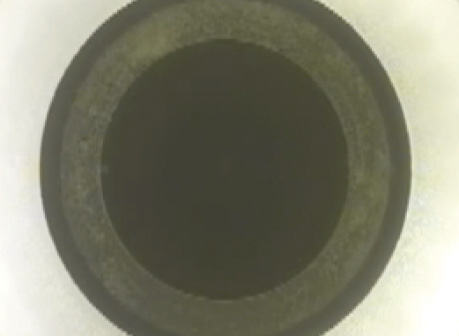From the time ReLEx SMILE was introduced, the question of how to enhance patients has bothered surgeons. With LASIK or femto-LASIK, enhancements are easy: The surgeon simply lifts the flap and performs excimer laser ablation of the refractive error that is to be corrected. With ReLEx SMILE, the issue is not as straightforward, as there is no flap to lift.
Luckily, refractive results after ReLEx SMILE are accurate and stable, meaning few patients require enhancements in the first place. However, some patients—especially higher myopes—do get a refractive outcome that needs enhancement.
two standard strategies
Surface ablation. The simplest way to perform an enhancement after ReLEx SMILE is surface ablation. In my experience, once the epithelium is removed, the corneal bed is smooth and free from any visible aberrations (which is not the case with LASIK). Enhancing ReLEx SMILE with surface ablation is, thus, a relatively straightforward affair.
However, surface ablation is not an attractive treatment option from the patient’s point of view. Patients do not accept the slow visual recovery and pain that follows surface ablation. They have paid for a premium refractive surgery procedure and are already unhappy when left with a refractive error. If, on top of this, the enhancement procedure that is offered results in pain and days away from work, patients will be even unhappier.
LASIK. I do not recommend femto-LASIK for SMILE enhancements unless there is enough corneal thickness available. For example, if the initial SMILE cap thickness is 100 μm, the femto-LASIK flap thickness for the enhancement should be set to at least 130 μm. Anything less is likely to result in gas bubbles from the flap interface migrating to the existing cleavage plane (ie, the posterior surface of the cap). If the gap between the respective cleavage planes (ie, the enhancement flap and the original cap) is too small, the bubbles could also create punctures in the corneal stroma during migration.
A new strategy
Circle. Recently, a procedure called Circle (Carl Zeiss Meditec) was developed to convert the original SMILE cap into a complete flap, with a hinge and a 270° to 330° sidecut incision. With Circle, the VisuMax femtosecond laser (Carl Zeiss Meditec) is used to create (1) an incision plane encircling the original cap cut as a lamellar ring, (2) a sidecut with hinge around the new incision plane, and (3) a junction cut, which allows the original cap and the new incision plane to be part of one larger surface.
Riau et al1 investigated the use of four different patterns to create these three cuts in rabbit eyes. Although all four patterns created a viable flap, the investigators found that Pattern D, which creates a lamellar ring at the same level as the original cap thickness, resulted in a flap that was the easiest to lift.
In our own clinical experience in human eyes, the Circle software is easy to use and reliably creates flaps that can easily be lifted to perform excimer laser reshaping.
The first Circle procedure was performed on a high myope with an original refraction of -9.50 D (eyetube.net/?v=ehonu). After the SMILE procedure, the patient still had a refractive error of -1.25 D. The Circle procedure was used to create the flap, and then the flap was lifted and excimer laser ablation was done to correct the -1.25 D.
THE CIRCLE PROCEDURE
With Circle, the VisuMax laser is used to create:
1. an incision plane encircling the original cap cut as a lamellar ring
2. a sidecut with hinge around the new incision plane
3. a junction cut, which allows the original cap and the new incision plane to be part of one larger surface
WATCH IT NOW: CIRCLE
In a patient who required an enhancement after ReLEx SMILE, the Circle procedure was performed to create a flap, followed by excimer laser ablation.

CONCLUSION
Because ReLEx SMILE is a flapless procedure, the question of how to enhance this treatment is not as straightforward as with LASIK. Although the refractive results of ReLEx SMILE are accurate and stable, inevitably some patients will need enhancement. The easiest approach to enhancing ReLEx SMILE is surface ablation; however, this is an unattractive option from the patient’s perspective. Circle, a procedure developed to convert the original SMILE cap into a complete flap, may prove to be a more promising approach to ReLEx SMILE enhancements.
AT A GLANCE
• With ReLEx SMILE, the approach to enhancements is not as straightforward as with LASIK, as there is no flap to lift.
• Some patients, especially higher myopes, may get a refractive outcome that needs an enhancement.
• Although the simplest way to perform enhancement after ReLEx SMILE is surface ablation, this option is not attractive to patients.
• The Circle software appears to be easy to use and to reliably create flaps that can be lifted to perform excimer laser reshaping.
- Riau A, Ang H, Lwin N, Chaurasia S, Tan D, Mehta J. Comparison of four different VisuMax Circle patterns for flap creation after small incision lenticule extraction.J Refract Surg. 2013;29(4):236-244.
Rupal Shah, MD
- New Vision Laser Centers in Vadodara, India
- rupal@newvisionindia.com
- Financial disclosure: Consultant (Carl Zeiss Meditec)
